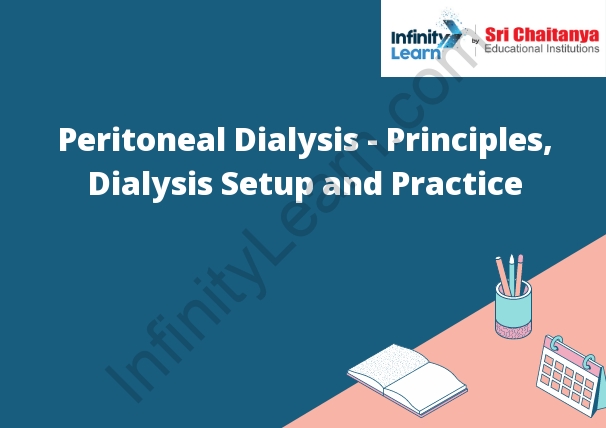Table of Contents
Principles Behind Peritoneal Dialysis
Peritoneal dialysis is a medical procedure that uses the peritoneal cavity as a natural filter to remove waste and excess fluid from the blood. It is a type of dialysis that does not require a machine. The peritoneal cavity is a space inside the body that is filled with a special solution called dialysate. The dialysate flows in and out of the peritoneal cavity, removing waste and excess fluid from the blood.
There are three principles behind peritoneal dialysis:
1. The peritoneal cavity is a natural filter that can remove waste and excess fluid from the blood.
2. Dialysate can flow in and out of the peritoneal cavity, removing waste and excess fluid from the blood.
3. The peritoneal cavity can be used to deliver medications and other treatments to the body.

Diffusion
The movement of molecules from an area of high concentration to an area of low concentration.
Ultrafiltration (UF)
is a water treatment process used to remove suspended solids, dissolved solids and other impurities from water. UF membranes have pores that are much smaller than the size of molecules of water, so only water molecules and very small particles can pass through. This results in a cleaner water stream that is lower in dissolved solids and other impurities.
Dialysis Setup
- Dialysis is a medical procedure that removes waste and excess fluid from the body. It is used to treat patients with kidney failure. There are two types of dialysis: hemodialysis and peritoneal dialysis.
- Hemodialysis uses a machine to filter the blood. A tube is inserted into a vein in the arm and the blood is passed through the machine. The machine removes the waste and excess fluid. The blood is then returned to the body.
- Peritoneal dialysis uses the lining of the abdomen as a filter. A tube is inserted into the abdomen and the dialysis solution is pumped into the abdomen. The solution filters the blood and removes the waste and excess fluid. The solution is then drained from the abdomen and the tube is removed.
Fill Time
In computer science, fill time is the time it takes to fill an empty cache line with data. It is the time it takes to bring a new cache line into the cache, evict an old cache line, and load the new cache line with data.
Dwell Time
Dwell time is the amount of time a signal spends in a particular state. For example, the dwell time of a signal in a low state might be 10 microseconds, while the dwell time of a signal in a high state might be 100 microseconds.
Drain Time
The time it takes for a liquid to flow out of a container, through a hole, and into the ground or some other receptacle.
Peritoneal Dialysis Fluid
Peritoneal dialysis fluid is a sterile solution that is used to clean the blood in people with kidney failure. It is placed in the peritoneal cavity, which is the space inside the abdomen that contains the intestines. The fluid is left in for a certain amount of time, and then drained out. It is replaced with fresh fluid several times a day.
Peritoneal Dialysis In Practice
Fri, 30 Mar 2018 | Peritoneal Dialysis
- PD is a form of renal replacement therapy that uses the peritoneal cavity as a filter to remove wastes and excess fluid from the blood. The peritoneal cavity is a space within the abdomen that is lined with a thin membrane called the peritoneum. The peritoneum can be thought of as a filter because it allows wastes and fluid to move in and out of the blood.
- PD uses a solution called dialysate to clean the blood. Dialysate is a sterile solution that contains a special mix of minerals and other substances. When the dialysate enters the peritoneal cavity, it surrounds the blood cells and pulls the wastes and excess fluid out of the blood. The wastes and excess fluid are then transported from the peritoneal cavity and eliminated from the body in the urine.
- PD is a safe and effective treatment for many people with kidney failure. It can be used as the only form of renal replacement therapy, or it can be used in combination with other treatments, such as hemodialysis or kidney transplant.









